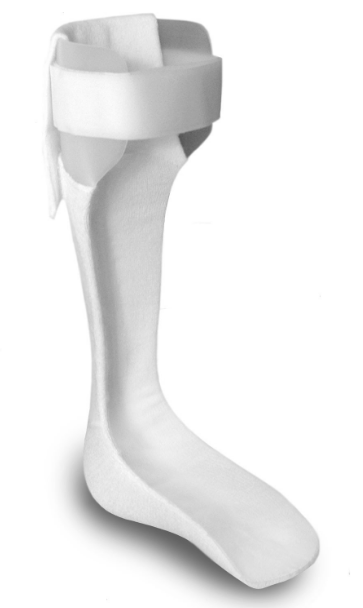The plastic Ankle Foot Orthosis (AFO) belongs to the modern era of lower limb orthotics. The pioneering developments of Engen (1971) in Houston, and Lehneis et al (1972) in New York, demonstrated the enormous potential and opportunities for the use of thermoplastic materials in orthotic construction. The move away from heavy metal and leather was revolutionary in orthotic design.
Several plastics were trialed, but polypropylene was found to be most versatile and easily applied. A UK-based GP who visited Houston at the time, wrote about these new plastic splints for children with spina bifida and soon many parents were actively seeking out the AFO. The development of the AFO and its popularity corresponded with the development of the orthotists’ professional role and the process of assessment and fitting.
In 1975, Perry published a model of normal physical activity and identified the body tissues and systems which contributed to each element of it. She proposed a classification of ‘functional loss’ which completely eliminated the need for diagnostic labels to describe the disorder needing treatment. This approach to orthotic assessment and fitting lead to the collaboration of physiotherapists and orthotists to support prescription of the AFO. This was demonstrated by a Consensus Conference that was held in North Carolina in 1994 with orthotists, biomechanics scientists, and physiotherapists discussing the role of the AFO in supporting the gait of children with cerebral palsy.
The AFO is also used in adults and a similar collaboration is seen in this population to assess and fit.
Description provided by Susan Waller of United Arab Emirates

